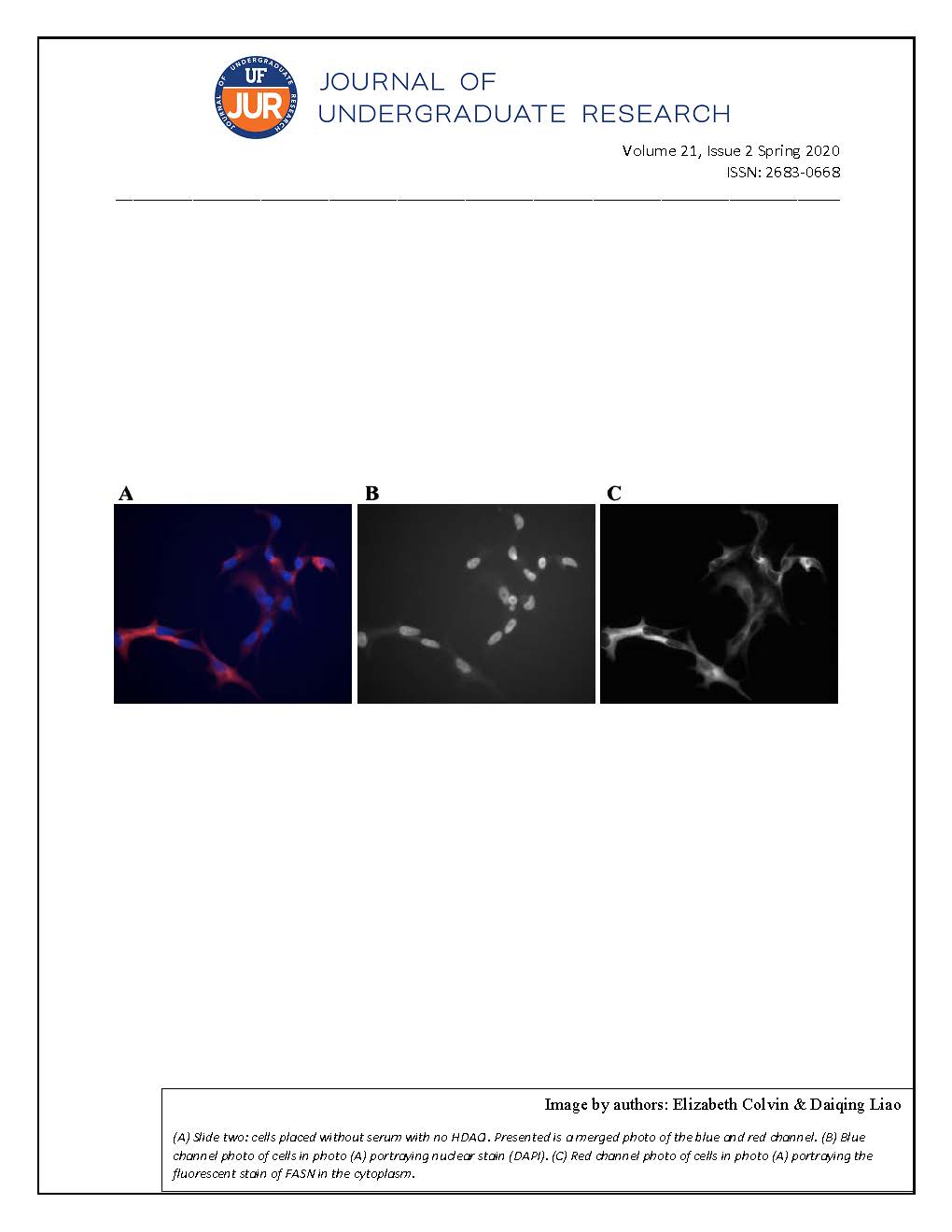Teacher School Mental Health Literacy Survey: A Validation Study
DOI:
https://doi.org/10.32473/ufjur.v21i2.108493Keywords:
mental health, school, teachers, studentsAbstract
Since teachers play an instrumental role in identifying students with social-emotional or behavioral (SEB) concerns, there is a need to assess and improve teachers’ knowledge in relation to children’s mental health. This study examines the psychometric properties of one such measure Teacher School Mental Health Literacy Survey (TSMHLS) within a sample of pre-service teachers (n = 38.) The survey assesses the mental health literacy of teachers as it relates to students and within the classroom context. Data analyses were run to explore the internal reliability, discriminant validity, and feasibility of the survey. Analyses indicate moderate to high reliability (Cronbach’s alpha=.743), providing psychometric support for the use of the TSMHLS with pre-service teachers. Pre-service teachers’ discrimination between clinical symptomology and typical development was significant, providing further support for the survey’s use in understanding pre-service teachers’ knowledge of SEB concerns. Finally, feasibility was assessed through average completion time for the online survey (24 minutes), and results indicate that the survey could be feasibly implemented during pre-service teacher training. These findings lend support to the TSMHLS as an appropriate measure to evaluate pre-service teachers’ knowledge of student mental health.
References
Aseltine Jr, R. H., Gore, S., & Gordon, J. (2000). Life stress, anger and anxiety, and delinquency: An empirical test of general strain theory. Journal of Health and Social Behavior, 256-275. doi: 10.2307/2676320
Brann, K., Bidwell, S., Boone, W., Dinnen, H., & Splett, J. (2018). Teacher School Mental Health Literacy Survey [unpublished instrument].
Chang, D. F., & Sue, S. (2003). The effects of race and problem type on teachers' assessments of student behavior. Journal of Consulting and Clinical Psychology, 71(2), 235-242. doi:10.1037/0022-006X.71.2.235
Cunningham, J. M., & Suldo, S. M. (2014). Accuracy of teachers in identifying elementary school students who report at-risk levels of anxiety and depression. School Mental Health, 6(4), 237-250. doi: 10.1007/s12310-014-9125-9
Davis, A. S., Kruczek, T., & Mcintosh, D. E. (2006). Understanding and treating psychopathology in schools: Introduction to the special issue. Psychology in the Schools, 43, 413–417. doi: 10.1002/pits.20155
Green, J. G., Guzman, J., Didaskalou, E., Harbaugh, A. G., Segal, N., & LaBillois, J. (2018). Teacher identification of student emotional and behavioral problems and provision of early supporters: A vignette-based study. Journal of Emotional and Behavioral Disorders, 26(4), 225–242. doi: 10.1177/1063426617740879
Loades, M. E., & Mastroyannopoulou, K. (2010). Teachers’ recognition of children’s mental health problems. Child and Adolescent Mental Health, 15(3), 150-156. doi: 10.1111/j.1475-3588.2009.00551.x
Merikangas, K.R., He, J., Burstein, M., Swanson, S.A., Avenevoli, S., Cui, L., Benjet, C., Georgiades, K., & Swendsen, J. (2010). Lifetime prevalence of mental disorders in U.S. adolescents: Results from the national comorbidity study-adolescent supplement (NCS-A). Journal of the American Academy of Child and Adolescent Psychiatry, 49(10), doi: 980-989. 10.1016/jaac.2010.05.017
Reinke, W. M., Stormont, M., Herman, K. C., Puri, R., & Goel, N. (2011). Supporting children's mental health in schools: Teacher perceptions of needs, roles, and barriers. School Psychology Quarterly, 26(1), 1-13. doi:10.1037/a0022714
Rones, M., & Hoagwood, K. (2000). School-based mental health services: A research review. Clinical Child and Family Psychology Review, 3(4), 223-241. doi:10.1023/A:1026425104386
Splett, J. W., Gibson, N., Garzona, M., Wojtalewicz, D., Raborn, A., & Reinke, W. M. (2019). Teacher recognition, concern and referral of internalizing behavior problems. School Mental Health,1-12. doi: 10.1007/s12310-018-09303-z
Splett, J. W., George, M. W., Zaheer, I., Weist, M.D., Evans, S. W., & Kern, L. (2018). Symptom profiles and mental health services received among referred adolescents. School Mental Health, 10(2), 96-110. doi:10.1007/s12310-017-9244-1
Stiffman, A. R., Hadley-Ives, E., Doré, P., Polgar, M., Horvath, V. E., Striley, C., & Elze, D. (2000). Youths' access to mental health services: The role of providers' training, resource connectivity and assessment of need. Mental Health Services Research, 2(3), 141-154. doi:10.1023/A:1010189710028
Wagner, M. (1995). Outcomes for youths with serious emotional disturbance in secondary school and early adulthood. The Future of Children, 5, 90–112.
Downloads
Published
Issue
Section
License
Some journals stipulate that submitted articles cannot be under consideration for publication or published in another journal. The student-author and mentor have the option of determining which journal the paper will be submitted to first. UF JUR accepts papers that have been published in other journals or might be published in the future. It is the responsibility of the student-author and mentor to determine whether another journal will accept a paper that has been published in UF JUR.

